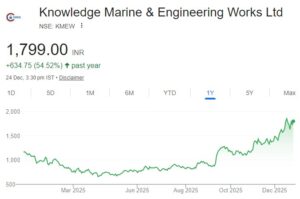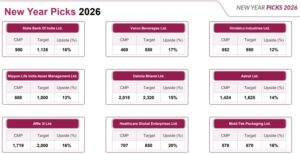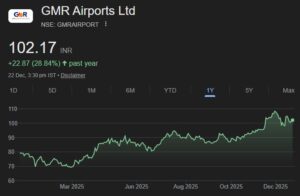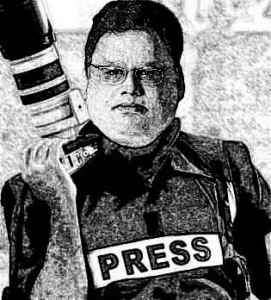
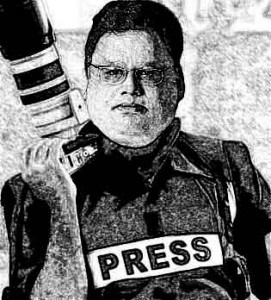
If you want to know why accomplished value investors have a fascination for newspaper stocks, you have to listen to Warren Buffet’s analysis. Warren Buffet’s investment company, Berkshire Hathaway, has in just 2 years, acquired 28 local newspapers for $344 million. Warren Buffett’s rationale is this:
“Newspapers continue to reign supreme in the delivery of local news. If you want to know what’s going on in your town – whether the news is about the mayor or taxes or high school football – there is no substitute for a local newspaper that is doing its job. A reader’s eyes may glaze over after they take in a couple of paragraphs about Canadian tariffs or political developments in Pakistan; a story about the reader himself or his neighbors will be read to the end. Wherever there is a pervasive sense of community, a paper that serves the special informational needs of that community will remain indispensable to a significant portion of its residents”.

Now, nobody knows more about value investing and finding multibagger stocks than Rakesh Jhunjhunwala. Rakesh Jhunjhunwala also has a fascination for media stocks. Old timers will recollect that one of Rakesh’s favourite stocks was Mid-Day Publications Ltd, till it was taken over by Jagaran Prakashan in 2010. Since then, Rakesh Jhunjhunwala has been scouting for a suitable newspaper stock.
Yesterday, Rakesh Jhunjhunwala found what he was hunting for. His investing arm, Rare Enterprises, scooped up 15 lakh shares of HT Media at Rs. 71.25 each for a total consideration of Rs. 10.69 crore.
Now, the all-important question is why HT Media and why not its peers like DB Corp. Jagaran Prakashan or Hindustan Media Ventures.
The best way to understand the merits of HT Media vs. that of its rivals is to read the comprehensive research report by Shobhit Khare of Motilal Oswal. In this report, Shobhit Khare has nicely identified the salient features of HT Media:
(i) HT Media has a diversified portfolio with exposure to English print, Hindi print, radio and online: ‘Hindustan Times’ (English daily) and ‘Hindustan’ (Hindi daily) are leading brands ranked 2nd and 3rd respectively on a pan-India basis in their respective genres, with a combined readership base of 16m. ‘Mint’ is the second-most read business daily in India. Radio business is concentrated in four metros. Company’s online portfolio is focused on news, networking, jobs and education space and could continue incurring operating loss;
(ii) HT Media has a strong franchise in Delhi (Rs15b+ market) and Bihar (one of the fastest growing markets), with ~50% readership share in both these markets. Dominant position in these markets gives stability to its business model, thus providing good mix of mature and emerging businesses.
(iii) However, because several businesses are in the investment phase (HT-Mumbai, Mint and Hindustan-UP), it would require significant improvement in the macro environment for them to start contributing to the bottom line;
(iv) HT Media’s balance sheet is strong with net cash and investment of ~INR25/sh, the adverse macro environment, low dividend payout and diversification beyond core areas has depressed RoE to single-digit levels. HT Media has the highest earnings sensitivity to change in ad growth/newsprint prices.
In the recent past, HT Media has underperformed. For 3QFY2014, HT Media reported a sluggish 4.8% YOY growth in its top-line to Rs. 573cr. The advertising revenue registered an 8.8% YOY growth to Rs. 452cr while the circulation revenue increased 17.7% YOY to Rs. 67cr. On the operating front, the OPM contracted by 89bp yoy to
15.1%. However, the net profit increased 24.9% YOY to Rs. 67cr owing to an increase in other income.
Now, the good thing is that this poor performance is reflected in the price of the stock. At the CMP, HT Media is trading at a valuation of 7.5x FY2015E consolidated EPS of Rs. 9.6, which is quite attractive.
HT Media has undertaken measures such as cutback in excess circulation and pagination efficiency to improve its margin. It has also divested its entire 51% stake in HT Burda which was making losses. The management has also indicated at a shift in focus from volume driven to yield driven advertising growth. The result is that yield driven advertising growth and upcoming elections will aid HT Media to improve advertising revenue growth and profitability.
So, Rakesh Jhunjhunwala’s calculation appears to be that the downside is limited in HT Media while the upside potential is huge.
